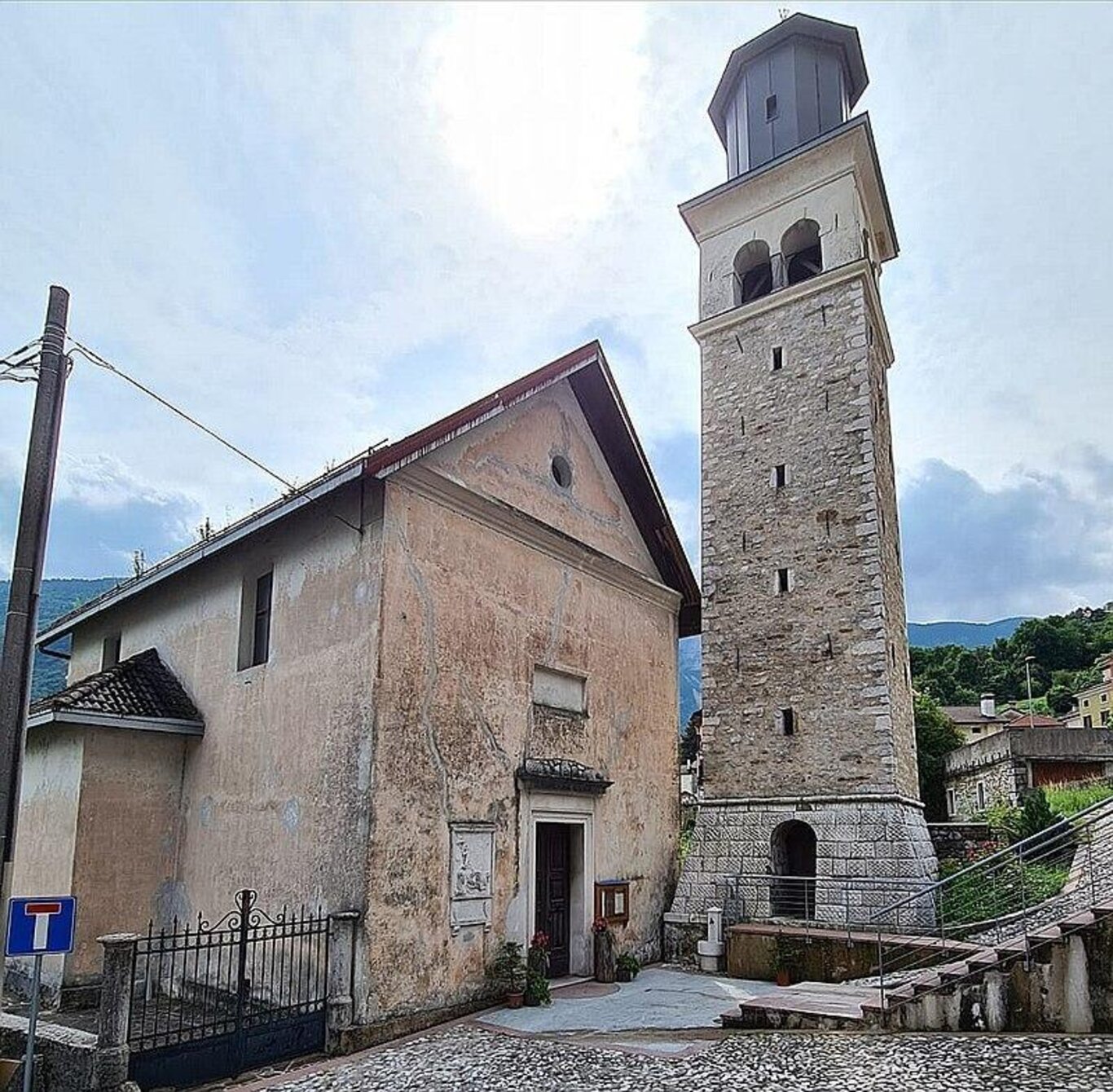The original church of the village was perhaps founded in the Early Middle Ages, between the 9th and 10th centuries, as can be inferred from its dedication to the Holy Cross; however, the first mention attesting to its presence is later, dated 1158.
In the subsequent centuries, the church was rebuilt three more times, only to be destroyed during the seismic event that occurred in 1873 and then rebuilt again at the end of the 19th century; it was elevated to parish status in 1958 by the bishop of Feltre and Belluno, Gioacchino Muccin.
The church's gabled facade, facing southwest, consists of a single register and is crowned by a triangular pediment; it features in the center an arched entrance portal topped by a niche containing an inscription, while on the left is affixed a high-relief depicting the Agony in the Garden of Gethsemane, probably created by Pietro Lombardo to commemorate the memory of the Nuremberg senator Paulus Imhoff, who passed away in 1478 right at Santa Croce.
Attached to the parish church is the stone bell tower with a square base, whose cell features a bifora on each side; crowning it is a metallic lantern with an octagonal base.
The interior of the building, plastered, consists of a single nave with a flat ceiling, alongside which are the side chapels introduced by rounded arches; at the back, a tall triumphal arch provides access to the presbytery, covered by a groin vault.
Here, several valuable works are preserved, including a altarpiece featuring the Deposition from the Cross and Saints, executed in the 17th century by the workshop of Francesco Frigimelica the Elder, and the canvas depicting Saint Philomena, painted by Girolamo Moech in the 19th century.
